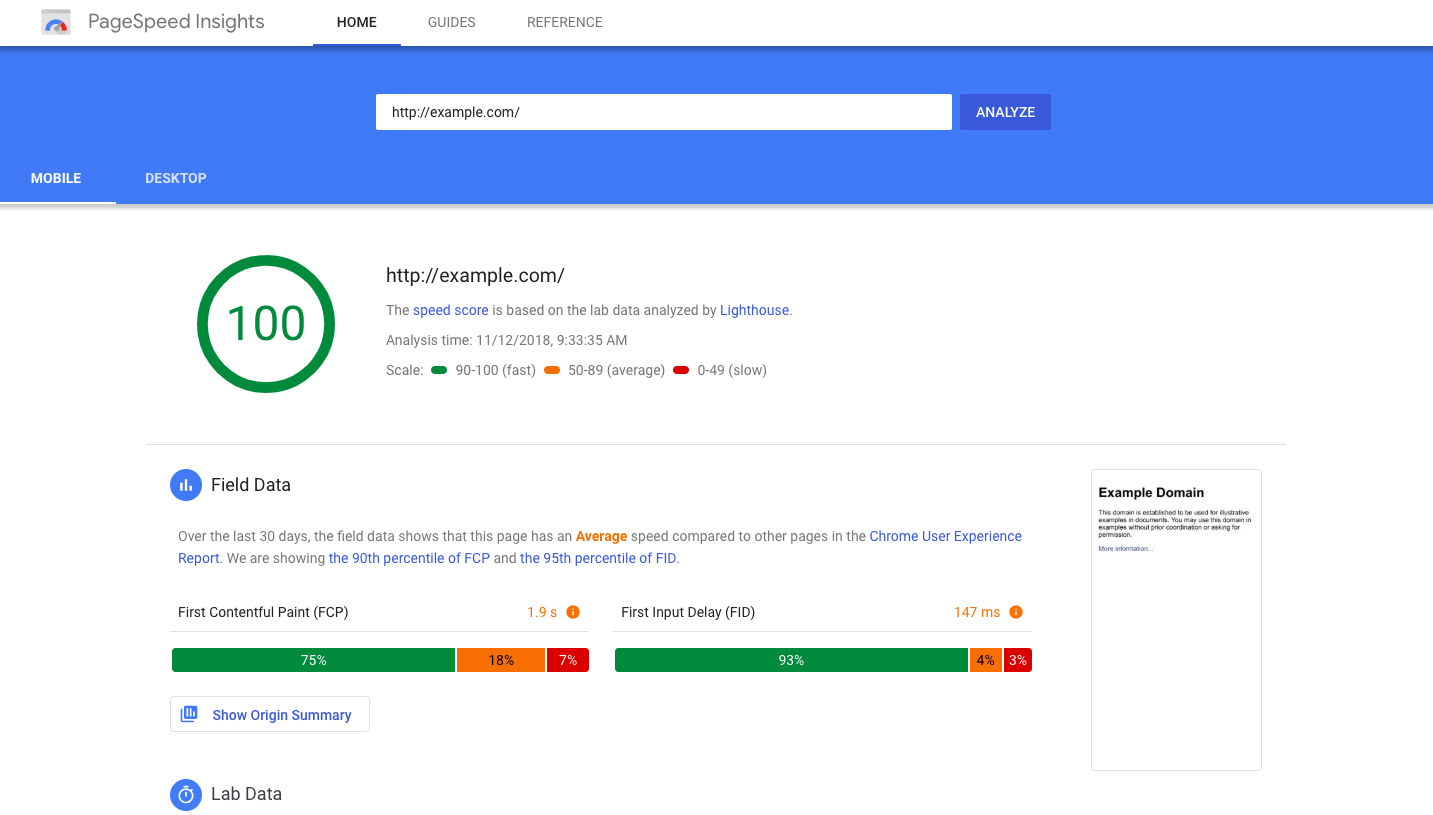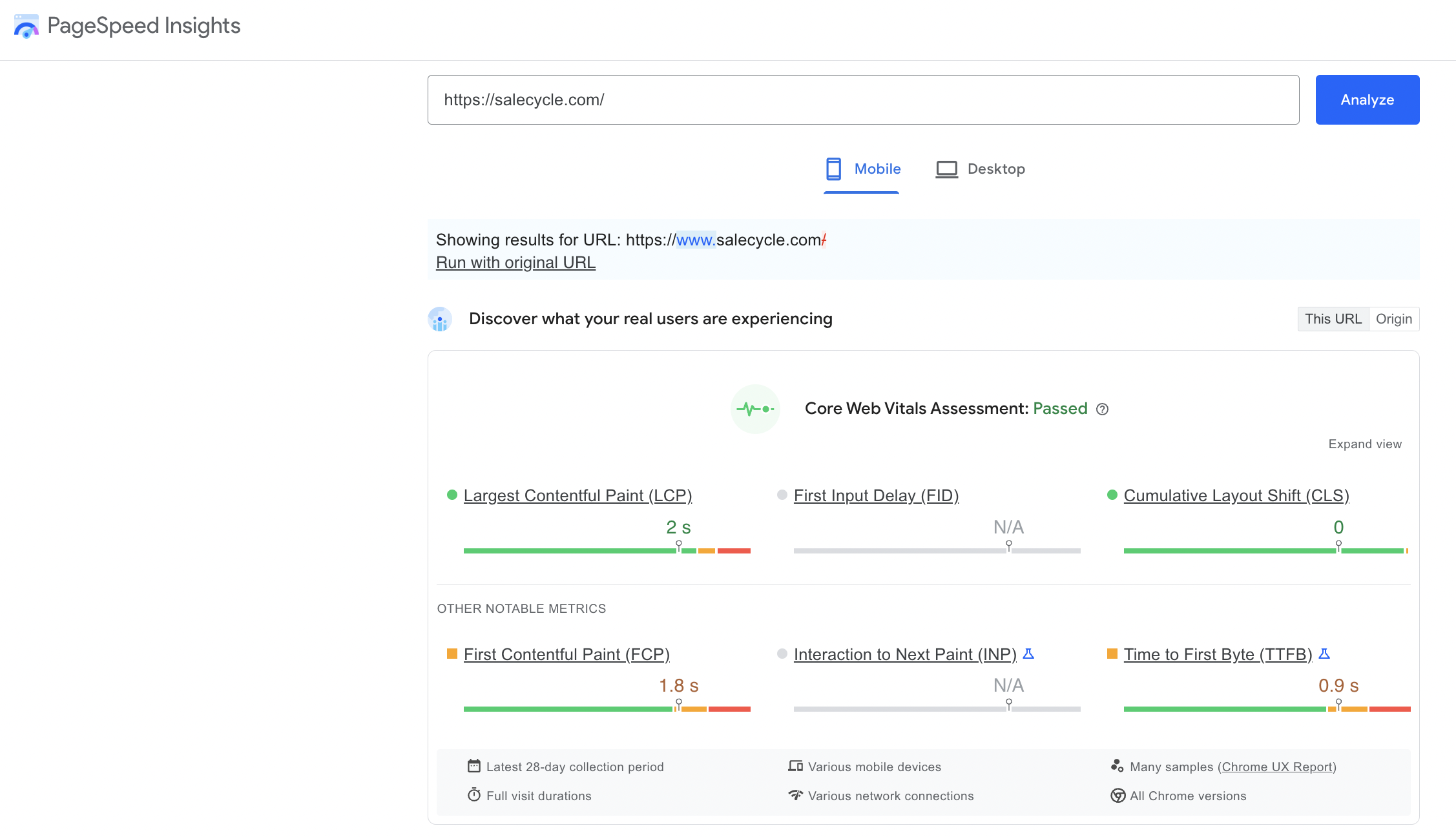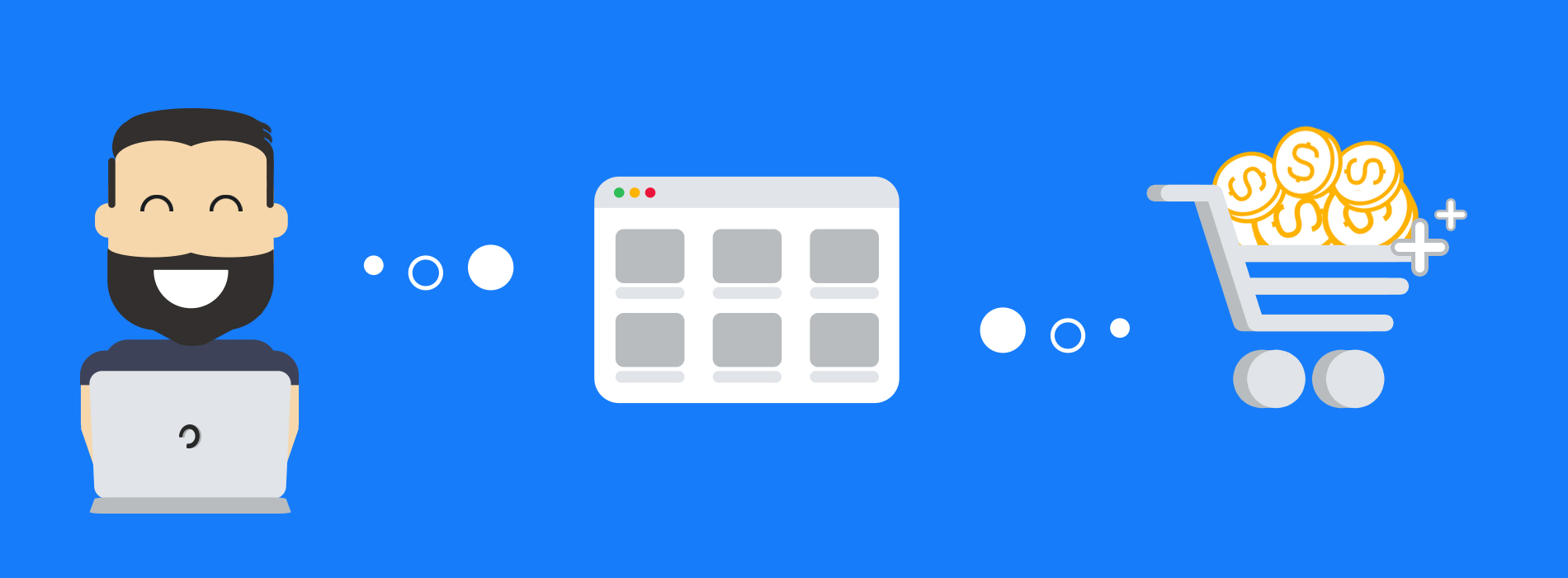Website speed is a crucial aspect of any online presence, yet it is often overlooked in the development and maintenance of a website. In today’s fast-paced digital world, users expect websites to load quickly and efficiently, and a slow loading website can have a negative impact on the ecommerce customer journey, search engine rankings, conversion rates and micro conversions, and even hosting and bandwidth costs.
In this article, we will explore the various reasons why website speed is so important according to ecommerce statistics, key data and social proof, and how it can be optimised to benefit both the website owner and the user, as well as 8 ways that you can improve and increase your website speed.
Why Is Website Speed Important?
Website speed is the measure of how quickly a website loads and becomes available to the user. It is an important factor to consider when designing and maintaining a website, as it can affect the UX / user journey, and can therefore negatively affect conversions rates.
It is fair to say that no one likes to wait for a website to load, especially in the age of fast internet speeds and short attention spans. If a website takes too long to load, users may become frustrated and leave the site, leading to a high bounce rate and low engagement.
Research has shown that even a one-second delay in page load time can result in a 7% reduction in conversions, and 47% of people don’t wait for more than two seconds for a web page to load. This highlights the importance of customer service in all aspects of your ecommerce site, especially when it comes to efficiency.
In contrast, faster websites tend to rank better in search engines, when looking at Google analytics metrics, for example – which can lead to more organic traffic and sales. A fast loading website provides a seamless and enjoyable user experience, encouraging users to stay on the site and explore its content.
All in all, speed is an integral part of the user experience, specifically for ecommerce websites as it can cost millions for every second worth of delay in the form of browse abandonment and shopping cart abandonment.
What Is Site Speed In SEO?
Website speed helps form the first impression for a visitor of that website and business. Developers and testers strive hard to make a website aesthetically pleasing and functional for UX (user experience) by adding numerous features, content, and functionalities – for example, website animations. However, if these features or the content are not adequately optimised it may adversely affect website speed.
Site speed refers to the speed at which a website loads and becomes usable for a visitor. It is a ranking factor in search engine optimisation (SEO) because faster loading times can improve the user experience, leading to higher levels of engagement and satisfaction. This, in turn, can help to improve the ranking of a website in search engine results pages.
Why Is Site Speed Important In SEO?
Improving site speed is important for search engine optimisation (SEO) because it can have a direct impact on the user experience. When a website takes a long time to load, visitors are likely to become frustrated and may leave the site before it has fully loaded. This is known as a “bounce”, and it can negatively affect a website’s ranking in search results.
In addition to improving the user experience, faster loading times can also help to improve the ranking of a website in search results. Search engines like Google use algorithms to determine the relevance and quality of a website, and site speed is one of the factors that they consider. Websites that load quickly are more likely to rank higher in search results than those that are slower.
By taking the time to optimise the speed of your website, you can help to increase traffic, engagement, and ultimately, the success of your online business.
What Is A Good Speed For A Website?
In short, the Google recommended page load time is under two seconds: “Two seconds is the threshold for ecommerce website acceptability. At Google, we aim for under a half-second.”
Page load time has been a hot topic for website improvement in most recent years – one main reason for this is due to mobile vs desktop conversion rates, and the increased number (and demand) of mobile visitors and m-commerce. With a higher volume of mobile users causing a ripple effect in website speed, ecommerce brands want the best possible user experience across all platforms to keep mobile conversions high.
Here are some key stats on website speed and more importantly, the stats you should be keeping in mind:
- If your site loads in 5 seconds, it is faster than approximately 25% of the web.
- If your site loads in 2.9 seconds, it is faster than approximately 50% of the web.
- If your site loads in 1.7 seconds, it is faster than approximately 75% of the web.
- If your site loads in 0.8 seconds, it is faster than approximately 94% of the web.


How To Check Website Speed?
When it comes to checking your website speed, there are several tools and methods available, ranging from online tools to browser developer tools to command line tools. Whether you are a website owner, developer, or marketer, understanding how to check website speed is essential for maximising the performance of your online presence.
Here are 3 kinds of tools that you can use to check the speed of your website:
- Online tools: There are many free online tools that allow you to check the speed of a website, such as Google PageSpeed Insights and other Google analytics ecommerce reports. These tools analyse the loading time of a website and provide recommendations for improvement.
- Browser Dev Tools: Most modern web browsers have built-in developer tools that allow you to check the loading time of individual resources on a webpage. To use these tools, simply open the website in your browser, right-click on the page, and select “Inspect” or “Inspect Element.” Then, navigate to the “Network” tab to see the loading times of the resources on the page.
- Command Line Tools: There are also command line tools that can be used to check the speed of a website, such as cURL and Wget. These tools allow you to retrieve the HTML of a webpage and measure the time it takes to download the page.
Regardless of the method you choose, it is important to test the speed of your website on a regular basis to ensure that it is performing optimally. This will help you to identify any potential issues and take steps to improve the speed of your website.


What Factors Affect Website Speed?
There are a number of factors that can affect the speed of a website, and it’s important to understand these in order to optimise its performance. Some of the key factors that can impact site speed include:
Size and Number of Files:
The more files that a website has, and the larger those files are, the longer it will take for the page to load. This includes images, videos, countdown timers, and other types of media, as well as scripts and stylesheets.
Use of External Resources:
If a website relies on external resources, such as external scripts or fonts, this can increase the time it takes for the page to load.
Hosting environment:
The hosting environment can also affect the speed of a website. Choosing a high-quality hosting provider and utilising a server that is optimised for the website’s needs can help to improve performance.
Website Design and Structure:
The design and structure of a website can also impact its speed. For example, websites that use a lot of animation or large, complex layouts may take longer to load than simpler, more streamlined sites.
Network Conditions:
The speed of a website can also be affected by the user’s network connection. For example, a website may load more slowly on a mobile device with a slower data connection compared to a desktop computer with a fast broadband connection.
Browser and Device:
The browser and device being used can also affect the speed of a website. Some browsers may be more efficient at loading certain types of content, and certain devices may have faster processors that can load content more quickly.
Website Traffic:
Website traffic can affect website speed because the more traffic a website receives, the more strain it puts on the server hosting the website. When a server is under a heavy load, it can take longer to process requests and deliver content to users. This can result in slower loading times for the website.
Plugins:
Plugins can sometimes reduce the speed of a website because they add additional functionality to the site, which can increase the number of requests made by the website and the amount of resources that are required to load the page. This can result in slower loading times.
CSS and JavaScript Use:
Heavy use of CSS (Cascading Style Sheets) and JavaScript can impact website speed because they are resources that the website needs to load in order to function properly. If a website has a lot of CSS and JavaScript, it can increase the number of requests made by the website and the amount of resources that are required to load the page. This can result in slower loading times.
By understanding the factors that can affect website speed, businesses can take steps to optimise the performance of their website and improve the user experience. This can include techniques such as optimising images and minimising the number of requests made by the website, as well as choosing a high-quality hosting provider and designing a simple, streamlined website.
How To Improve Website Speed
Improving site speed is important for any ecommerce website, as it can have a direct impact on the user experience and ultimately, the success of the online business. A slow loading website can lead to frustration and a high bounce rate, resulting in lost sales and revenue. On the other hand, a fast loading website can improve the user experience and encourage visitors to stay longer, potentially leading to increased conversions and sales.
There are several steps that ecommerce businesses can take to improve the speed of their website. Find out how with these 8 tips:
8 Ways To Improve Website Speed:
- Optimise images: Large image files can significantly slow down a website, so it’s important to optimise them for the web. This can be done by compressing the files and reducing their size without sacrificing quality. There are a variety of tools available that can help with this process, such as TinyPNG and Kraken.
- Minimise the number of requests: Each time a webpage loads, it sends a request to the server for resources such as images and scripts. The more requests that are made, the longer it will take for the page to load. To minimise the number of requests, try to combine files wherever possible, such as combining multiple CSS files into one.
- Use caching: Caching involves storing frequently accessed resources on the user’s device, so that they don’t have to be downloaded each time the page is loaded. This can significantly improve the speed of the website, especially for returning visitors. There are various caching plugins available for popular CMS platforms such as WordPress and Magento.
- Use a caching plugin: In the same vein as the last tip, a caching plugin stores a copy of your website’s pages and posts in the cache, so that when a user accesses the page, the cached version is served instead of generating a new page on the fly. This can significantly improve the speed of your website, especially for repeat visitors.
- Upgrade your hosting: If your website is hosted on a shared hosting plan, it’s possible that the server resources are being stretched thin, which can slow down your website. Consider upgrading to a VPS or a dedicated server to get more resources and improve the speed of your website.
- Enable compression: Enabling compression can reduce the size of files being transferred between the server and the user’s device, improving the speed of the website. This can be done using Gzip compression, which is a common method for compressing files.
- Minimise the use of third-party plugins: Third-party plugins can add functionality to your website, but they can also add additional HTTP requests and increase the load time of your website. Only use the plugins that are absolutely necessary, and consider using a plugin like P3 (Plugin Performance Profiler) to identify any plugins that are causing performance issues.
- Use a content delivery network (CDN): A CDN is a network of servers that are located in different parts of the world, and it can help to improve the speed of a website by serving content from the server that is closest to the user. This can be especially useful for ecommerce websites with a global audience.


Tips To Improve Website Speed From SaleCycle
Ben Harrison, SaleCycle’s Website Marketing Specialist, gives his professional advice on the first steps to website optimisation:
“Ensuring Website speed is as optimised as can be is vital when it comes to ecommerce sites. This can make the difference between a new lead or a loss of a potential customer. Research shows most users leave a website if it does not load within the first 3 seconds of clicking on to the site.
Key factors to maintaining a great site speed can be compressing & optimising images, reducing unused JavaScript or even just deactivating unnecessary plug-ins on your site.”
Ben Harrison, Website Marketing Specialist
In Summary
Improving site speed is an ongoing process, and it’s important to regularly test and monitor the speed of an ecommerce website. By regularly testing and optimising the speed of an ecommerce website, businesses can improve the user experience and potentially increase sales and revenue.
Speak to an expert
Learn how to convert your online audience into revenue with our experts.


Casey Turnbull
Casey is a Fashion Journalism graduate & ecommerce marketing executive at SaleCycle. Casey is committed to producing high quality content backed by in-depth research and data. She has experience developing content in a range of sectors including fashion, ecommerce and sports.
![How To Optimise Website Speed [8 Examples]](https://www.salecycle.com/wp-content/uploads/2023/01/Countdown-Timer.webp)







![Valentine’s Day Ecommerce Tips and Trends [2024 Strategy]](https://www.salecycle.com/wp-content/uploads/2019/01/valentines-ecommerce-1.png)



![How SaleCycle helped Vodafone increase their online sales by an additional 2,000 additional sales per month [Extended Version]](https://www.salecycle.com/wp-content/uploads/2023/08/vodafone-banner.webp)





